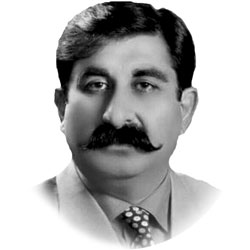Is political monopoly broken?
PAKISTAN has shifted from a two party to a three party system with the introduction and induction of the PTI.
The dynastic political tradition has been disturbed and the concentration of seats in assemblies has been substantially reshuffled. With the emergence of new dynamics in the structure of the political parties, the political culture is changed.
After the PTI came to power by challenging the core bases of status quo parties, it gradually played a larger role in shaping the idea of institutional change.
The inclusion of a third political force has brought about two major changes; the participation of youth through social media and an increase in the share of women taking part in politics.
Besides structural changes, an important impact was the introduction of young middle-class leadership into mainstream politics.
Some new women entered the Assemblies for the first time and a few even joined the cabinets. The PTI phenomenon transformed Pakistan’s youth into an accessible and arguably vital and blunt voting bloc.
The plausible threat of attrition within traditional parties has forced their leadership to consider moving towards somewhat more inclusive decision-making. This has begun to open up more opportunities for vertical movement for all.
The changes in the dynastic politics brought about by PTI have left the party less constrained by the interests of its leaders’ families as it pushes through reforms with an anti-status quo agenda.
Though similar to PPP, PML-N, and ANP, PTI is also a highly centralized party embodied by Imran Khan. The difference is that Imran Khan does not hail from a political family. Unlike the other parties, originally the genuine PTI leadership’s political clout was not based on land ownership and industrial wealth. Neither was he prominent in student politics.
But like others foreign funding scandal has a big question mark on Imran Khan’s financial reputation. Imran Khan’s anti-incumbent status in politics also gave him an edge vis-a-vis the other party leaders, because he himself could credibly claim to provide alternative leadership.
In 2018 in Punjab and Sindh, PTI changed the monopoly of PPP and PML-N power and quickly emerged as the ruling party.
Results of all the bi-elections and local government contests in the stronghold of PTI in KP have exposed it’s popularity graph.
In 2022 the PTI is not a dominant force in Punjab, Sindh, KP and Baluchistan, and its anti-status quo reforms can further undermine its ruling position in the provinces very soon.
Whether this is the same Pakistan or a New Pakistan, and whether the PTI’s rise marks a new political moment, or more of the same.
One of the election promises by PTI was revamping foreign policy, though the other political parties claim that the promise was nothing but an electoral gimmick. The political changes have cast definite impacts both on domestic structure and foreign policy.
New legislation has been introduced, institutional reforms are underway, accountability process has been triggered, new levels of stability in civil military relations achieved and new middle class and young leaders have emerged.
Whether PTI’s existing role in Pakistani politics is theorized as continuation of democratic evolution or a new phenomenon, it is important to consider the ways in which the PTI invokes a political status quo. Making tough changes requires an extraordinary approach.
Punjab used to be the base camp of PML-N and its status in Pakistan’s political fabric is very crucial. In 2018 the PTI won a plurality but not a majority in the Punjab Provincial Assembly, so it chose to join hands with PML-Q, a rival of PML-N, to set up a government.
However, Sharifs retained political strength with considerable numbers in the Assembly constituting a tough opposition for the ruling party. In the economic and governance arena, PTI’s performance has remained questionable during more than three years rule.
The Punjab government has been struggling in its various policies, because it has disadvantage of less experience in governance of a huge province.
Compared to its success introducing reforms and improving governance in KP, it looks difficult to achieve major progress in the other three provinces and at the Centre. The KP had never been a strong political base for either the PML-N or the PPP.
In Baluchistan, the political evolution of parties is very unique. The influence is only cast by ethno-nationalist parties representing Pashtun and Baloch segments.
Party politics in Pakistan have long been influenced by intrinsic social structures, religion, family and place.
In addition, civil-military relations are key to understanding Pakistani political history. The PTI has emerged out of the deeply entrenched social fabric employing novel tactics and creating space by waging resistance to the existing political culture.
The transformation indicates dynamism in the political structure of Pakistan, particularly related to party politics under successive transitions of power without any extra-institutional hindrance.
The challenge to dynastic culture in the party system is a most significant development, indicating the upward trajectory of political evolution; this has combined with an emphasis on anti-corruption and performance, creating pressure for political parties to deliver.
The immediate effect has been a strong sense of expectation for economic progress and systemic change, which is facing resistance from domestic political actors.
The peaceful transfer of power in successive governments, the electoral process and the sustainable multi-party system are omens for strength of our political structure. It would lay the ground for capable leadership, a politically conscious populace and strong state.
—The writer is editor, book ambassador, political analyst and author of several books based in Islamabad.









